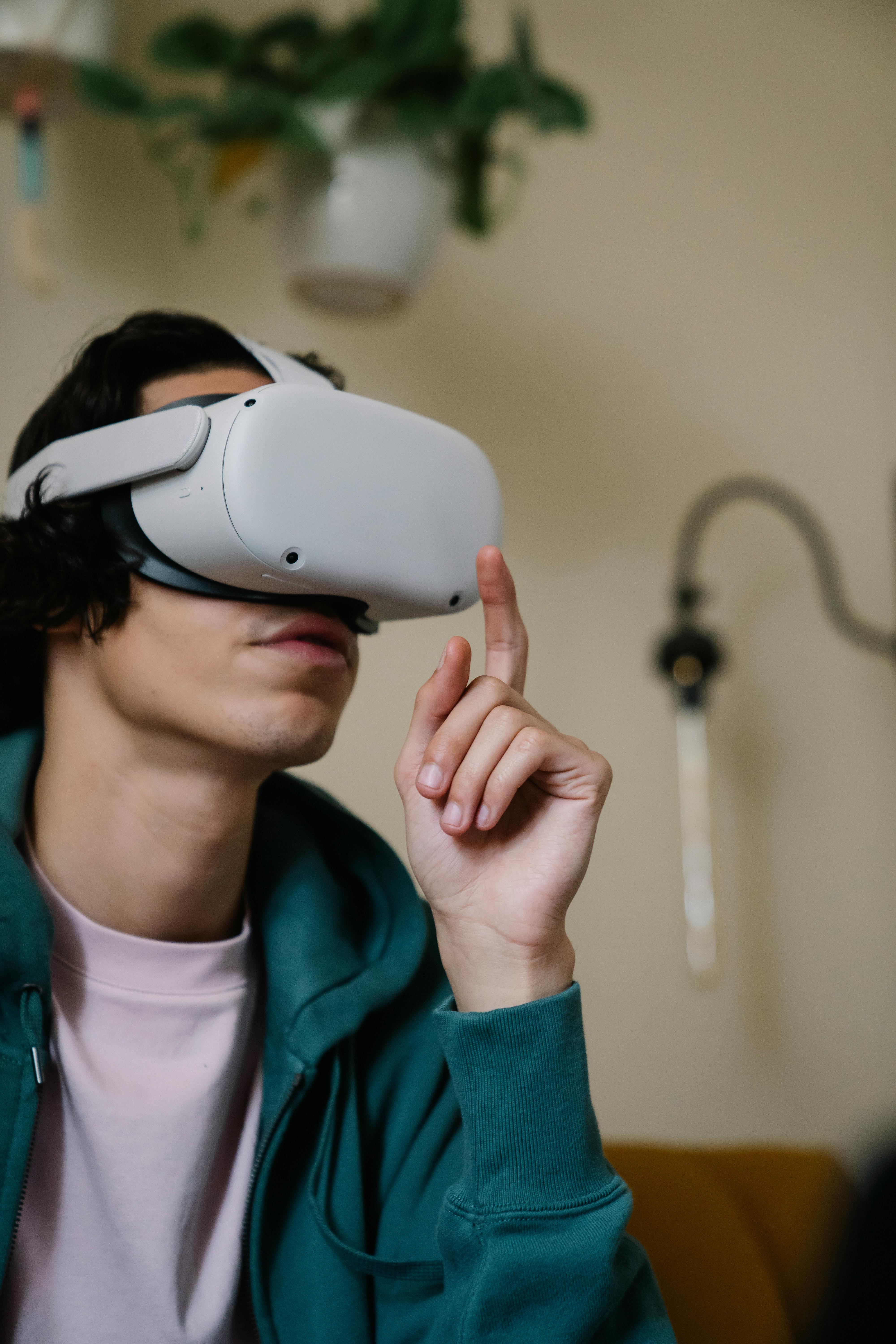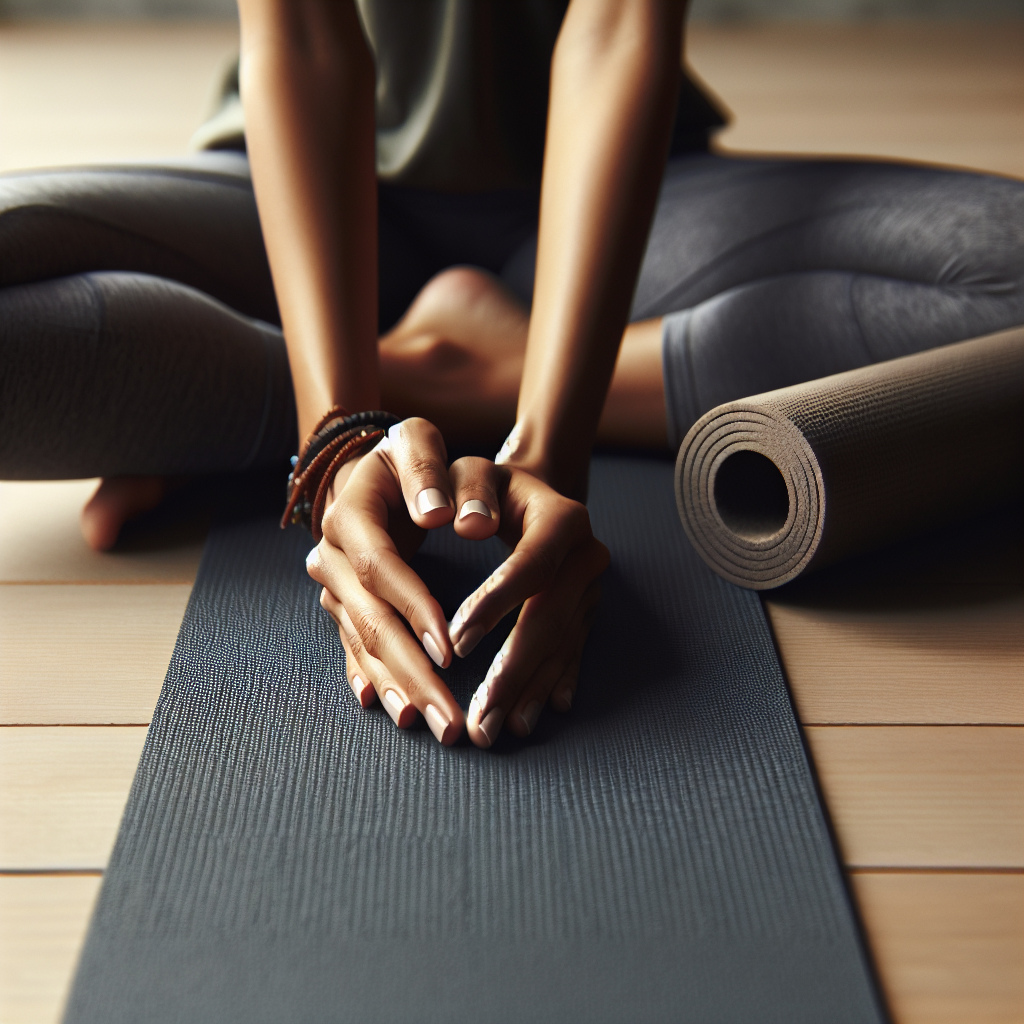Are you feeling overwhelmed by the daily stressors of life? Curious if there is a natural way to alleviate your stress and anxiety? Look no further than yoga. With its gentle movements, deep breathing exercises, and calming effects on the mind, yoga has been shown to be a powerful tool in reducing stress and anxiety. In this article, we will explore the benefits of incorporating yoga into your daily routine and how it can help you find inner peace and tranquility amidst the chaos. So, grab your yoga mat and join us on this journey to a calmer, more relaxed you.

What is stress and anxiety?
Stress and anxiety are common experiences that many people face in their daily lives. Stress can arise from various sources, such as work pressure, financial burden, relationship issues, or health concerns. It is the body’s response to perceived threats or demands, triggering a physiological and psychological reaction. Anxiety, on the other hand, is a persistent and excessive worrying about future events or situations. While everyone may experience stress and anxiety at some point, chronic and intense levels can greatly impact overall well-being and quality of life.
Understanding the benefits of yoga
Yoga has gained popularity worldwide as a holistic practice that enhances physical, mental, and spiritual well-being. It originated in ancient India and encompasses a combination of physical postures, breathing techniques, meditation, and philosophical principles. The practice of yoga is believed to harmonize the body, mind, and spirit, promoting a sense of balance and inner peace.
Physical benefits of yoga
Engaging in regular yoga practice can have numerous physical benefits. Yoga postures, also known as asanas, promote flexibility, strength, and balance. By stretching and strengthening the muscles, tendons, and ligaments, yoga improves overall body alignment and posture. It can also enhance the functioning of the cardiovascular, respiratory, and digestive systems, leading to improved energy levels and overall physical health.
Mental benefits of yoga
In addition to the physical advantages, yoga is renowned for its mental benefits. The combination of movement, breath control, and mindfulness exercises can help calm the mind and reduce stress levels. Regular practice of yoga has been shown to increase self-awareness, focus, and concentration. It also promotes relaxation, reduces anxiety, and enhances overall mental well-being. By cultivating a sense of inner peace and balance, yoga can effectively support the management of stress and anxiety.

The link between yoga and stress reduction
Yoga and stress reduction are intricately linked due to the unique combination of physical, mental, and spiritual elements of the practice. Yoga encourages the body to relax, release tension, and reduce the levels of stress hormones, such as cortisol. Asanas, pranayama (breathing exercises), and meditation techniques incorporated in a yoga practice help activate the body’s relaxation response, relieving stress and promoting a state of calmness.
Furthermore, by focusing on the present moment during yoga practice, individuals can shift their attention away from the worries and concerns that contribute to stress and anxiety. The mindful element of yoga encourages individuals to detach from racing thoughts and instead cultivate a nonjudgmental awareness of the sensations, thoughts, and emotions that arise in the present moment. Through this process, individuals can gain insight into how stress and anxiety manifest within them and develop coping strategies to manage them effectively.
Scientific evidence supporting the effectiveness of yoga
As the popularity of yoga grows, so does the body of scientific research supporting its effectiveness in reducing stress and anxiety. Numerous studies have explored the impact of yoga on various aspects of mental health and well-being, consistently demonstrating positive outcomes.
Studies on the impact of yoga on stress and anxiety
Research has shown promising results regarding the effectiveness of yoga in reducing stress and anxiety levels. A study published in the Journal of Clinical Psychology in 2018 found that participants who engaged in a six-week yoga program experienced significant reductions in anxiety and perceived stress compared to a control group. Another study published in the Journal of Alternative and Complementary Medicine in 2019 revealed that yoga interventions were associated with decreased levels of stress, anxiety, and depression in adults.
The role of mindfulness in yoga practice
Mindfulness, a key component of yoga practice, has been extensively studied for its effectiveness in stress reduction. It involves paying attention to the present moment without judgment and with an attitude of curiosity and acceptance. Several studies have shown that mindfulness-based interventions, which often incorporate yoga practices, can significantly reduce stress, anxiety, and depressive symptoms. By cultivating mindfulness through yoga, individuals can develop greater resilience and the ability to manage stress more effectively.

Exploring different types of yoga for stress and anxiety
There are various types of yoga, each with its own emphasis and style. Exploring different types of yoga can help individuals find a practice that resonates with their needs and preferences. Here are some popular types of yoga that are particularly beneficial for stress and anxiety reduction:
Hatha yoga
Hatha yoga is a gentle, slow-paced practice that focuses on proper alignment and breathing. It generally involves holding poses for a period of time, allowing the body to relax and release tension. Hatha yoga is an excellent choice for beginners or individuals looking for a gentle approach to stress reduction.
Vinyasa yoga
Vinyasa yoga, also known as flow yoga, emphasizes the synchronizing of movement and breath. It involves flowing sequences of poses, creating a dynamic and fluid practice. Vinyasa yoga can be invigorating and energizing, helping to alleviate stress and anxiety by promoting mindfulness and a sense of moving meditation.
Yin yoga
Yin yoga is a passive style of yoga that targets the connective tissues and joints in the body. Poses are held for an extended period, usually between 3 to 5 minutes, allowing for deep relaxation and release of tension. Yin yoga encourages individuals to surrender to the sensations and observe the thoughts and emotions that arise, making it an effective practice for stress reduction.
Restorative yoga
Restorative yoga is a deeply relaxing and nurturing practice that focuses on rest and rejuvenation. It involves the use of props, such as blankets, bolsters, and blocks, to support the body in gentle, passive poses. Restorative yoga activates the body’s relaxation response, helping to alleviate stress and anxiety by promoting deep relaxation and restoration.
Bikram yoga
Bikram yoga, also known as hot yoga, is practiced in a heated room with specific sequences of 26 postures and breathing exercises. The heat helps warm and loosen the muscles, increasing flexibility and enhancing detoxification. Bikram yoga can provide a challenging physical practice while promoting mental focus and stress reduction.
Tips for incorporating yoga into your stress management routine
To fully reap the benefits of yoga for stress and anxiety reduction, it’s important to incorporate it into your daily routine. Here are some tips to help you establish a regular yoga practice:
Finding the right yoga class or instructor
Finding the right yoga class or instructor can greatly enhance your experience and motivation. Look for classes or instructors that specialize in stress reduction or offer a gentle and accessible approach to yoga. Explore different studios and class styles until you find the one that resonates with you the most.
Creating a dedicated yoga space
Designating a specific space in your home for yoga practice can help create a peaceful and inviting environment. Clear the area of any clutter, add some soft lighting or candles, and incorporate comfortable props or blankets to enhance relaxation. Having a dedicated space helps signal to your mind and body that it’s time to unwind and focus on your practice.
Establishing a regular yoga practice
Consistency is key when it comes to reaping the benefits of yoga for stress and anxiety reduction. Schedule regular time for your yoga practice and stick to it as much as possible. Whether it’s a few minutes each morning or a longer session a few times a week, making yoga a part of your routine will help cultivate a habit that can support your stress management goals.
Combining yoga with other stress-reduction techniques
While yoga alone can be highly effective in reducing stress and anxiety, combining it with other stress-reduction techniques can amplify the benefits. Here are some techniques that complement yoga practice:
Meditation
Meditation and yoga go hand in hand, both promoting mindfulness and inner peace. Incorporating meditation before or after your yoga practice can further calm the mind, reduce stress, and enhance self-awareness. Start with just a few minutes of seated meditation and gradually increase the duration as you become more comfortable.
Breathing exercises
Pranayama, or yogic breath control, is an integral part of yoga practice. Specific breathing techniques can activate the body’s relaxation response and reduce stress. Incorporate simple breathing exercises, such as deep belly breathing or alternate nostril breathing, into your yoga practice to enhance its stress-reduction benefits.
Journaling
Writing down thoughts, emotions, and experiences in a journal can be a powerful tool for stress reduction. After your yoga practice, take a few moments to reflect and write about your experience. Journaling can help process emotions, gain insights, and develop a deeper understanding of oneself.
Healthy lifestyle choices
In addition to yoga and other stress-reduction techniques, making healthy lifestyle choices can greatly support stress management. Engage in regular physical activity, prioritize quality sleep, maintain a balanced diet, and cultivate positive relationships. Taking care of your overall well-being will enhance the effectiveness of yoga as a stress reduction tool.
Practical yoga poses and sequences for stress and anxiety relief
Incorporating specific yoga poses and sequences into your practice can target stress and anxiety directly. Here are some poses that are particularly helpful for stress and anxiety relief:
Child’s Pose (Balasana)
Child’s Pose is a restorative and grounding pose that promotes deep relaxation. Start by kneeling on the floor, bring your forehead to the mat, and extend your arms forward or rest them alongside your body. Allow your body to surrender into the pose and focus on slow, deep breaths.
Cat-Cow (Marjaryasana-Bitilasana)
Cat-Cow is a gentle flow between two poses that helps release tension in the spine and promotes mindful movement. Begin on your hands and knees, and exhale as you round your spine up towards the ceiling (Cat pose). Inhale as you arch your back and look up (Cow pose). Repeat the flow several times, syncing your movements with your breath.
Legs-Up-the-Wall (Viparita Karani)
Legs-Up-the-Wall is a restorative pose that helps calm the nervous system and promote relaxation. Lie on your back with your hips close to a wall and extend your legs up against the wall. Allow your arms to rest alongside your body and close your eyes. Stay in this pose for several minutes, focusing on slow, deep breaths.
Corpse Pose (Savasana)
Corpse Pose is the final relaxation pose in a yoga practice. Lie flat on your back with your arms alongside your body and your palms facing upwards. Close your eyes and focus on releasing tension from each part of your body, starting from your toes and moving up to your head. Stay in this pose for at least 5-10 minutes to fully experience the benefits of deep relaxation.
Overcoming common challenges in yoga for stress and anxiety
Embarking on a yoga practice for stress and anxiety reduction may come with some challenges. Here are some common challenges and suggestions for overcoming them:
Feeling self-conscious or judgmental
Many individuals feel self-conscious or judgmental when starting a yoga practice, especially if they are new to it. Remember that yoga is a personal journey, and there is no judgment or competition in the practice. Embrace and accept your body as it is, focusing on your own experience rather than comparing yourself to others.
Physical limitations or injuries
If you have physical limitations or injuries, it’s essential to modify the yoga practice to suit your needs. Work with a qualified yoga instructor who can guide you in adapting the poses and sequences to accommodate your specific circumstances. Listen to your body and never push yourself beyond your limits to avoid further injury.
Lack of time or motivation
Finding time and motivation for a regular yoga practice can be challenging, especially when life gets busy. Start by setting small, achievable goals and find pockets of time throughout your day to incorporate yoga, even if it’s just a few minutes of stretching or breathing exercises. Remind yourself of the positive benefits that yoga can bring to your physical and mental well-being, and create a supportive environment that fosters motivation.
Conclusion
Yoga offers a powerful and comprehensive approach to reducing stress and anxiety. By combining physical postures, breathing exercises, mindfulness, and relaxation techniques, yoga provides individuals with the tools to cultivate a state of calmness and balance amidst the chaos of everyday life. Scientific research continues to support the effectiveness of yoga for stress and anxiety reduction, highlighting its numerous physical and mental benefits.
Whether you choose to explore different types of yoga or incorporate yoga into your existing stress management routine, the key is consistency and dedication. As you embark on your yoga journey, remember to be kind to yourself, listen to your body, and embrace the transformative power of yoga in reducing stress and anxiety. With regular practice, you can experience the many benefits that yoga has to offer and lead a more fulfilled and harmonious life.
